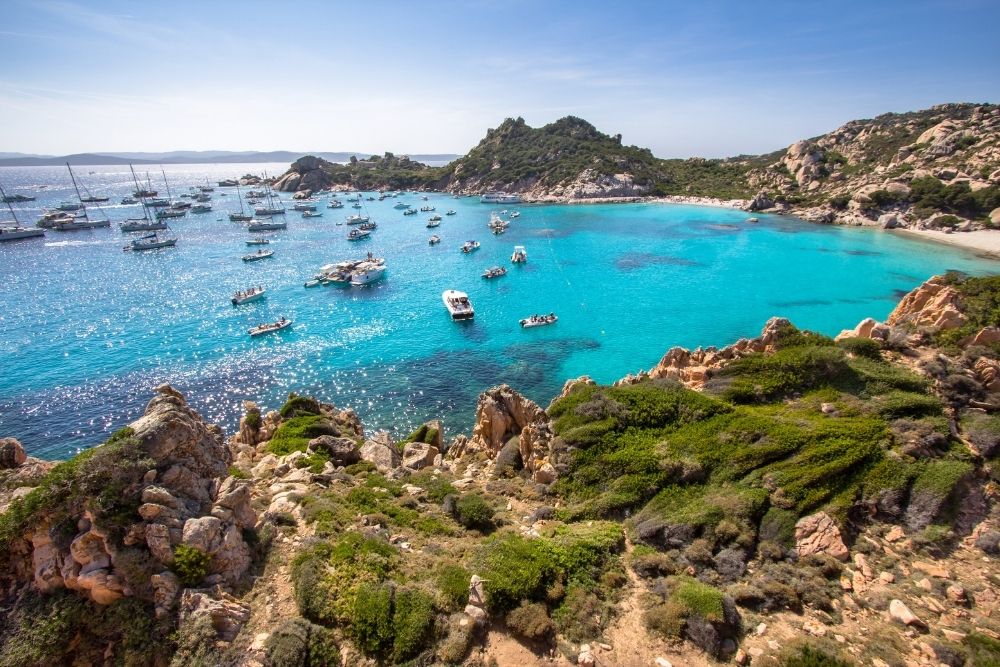
Tharros
The ancient city of Tharros, located on the Sinis peninsula of Sardinia, Italy, stands as a testament to the intricate tapestry of history and culture in the Mediterranean. Founded by the Phoenicians in the 8th century BC, Tharros became a vibrant hub for trade and a melting pot of various civilizations, including the Carthaginians and the Romans. This detailed exploration delves into Tharros' historical significance, archaeological findings, and its role in the broader context of ancient Mediterranean civilizations.
The Founding and Early History
Tharros was established by the Phoenicians, a seafaring people known for their extensive trade networks across the Mediterranean. The choice of Tharros' location was strategic; its position on the western coast of Sardinia provided a protected harbor and a stepping stone for trade routes between the western Mediterranean and the North African coast. Early artifacts found at the site suggest that Tharros was not only a commercial center but also a religious and cultural melting pot.
Carthaginian Influence
In the 6th century BC, control of Tharros passed to the Carthaginians, another powerful maritime civilization. Under Carthaginian rule, Tharros flourished as a trade outpost. The city's architecture and urban planning saw significant developments during this period, including the construction of the tophet, a sacred area used for religious rituals and burials, indicative of Carthaginian religious practices.
Roman Tharros
The fall of Carthage to Rome after the Punic Wars led to Tharros becoming part of the Roman Empire. Under Roman rule, the city was further developed and Romanized, leading to a transformation in its architectural landscape. Public baths, aqueducts, and a forum were constructed, showcasing the typical Roman approach to city planning. The remnants of these structures provide insight into the daily lives of its inhabitants, highlighting a society rich in cultural and social activities.
Archaeological Discoveries
The archaeological excavations at Tharros have unearthed a wealth of artifacts that illuminate the city's historical narrative. Noteworthy finds include intricate mosaics, Roman coins, pottery shards from various periods, and sculptures that suggest the presence of a diverse artistic community. Each layer of excavation peels back the history, revealing the influences of the different civilizations that occupied the city.
The Decline of Tharros
By the end of the Roman Empire, Tharros faced increasing threats from raiding sea pirates and a decline in its economic significance. The exact reasons for the city's abandonment in the 10th century remain a subject of scholarly debate, though most theories suggest that the inhabitants relocated to more secure locations inland due to the constant threat of invasions.
Tharros Today: A Tourist and Scholarly Destination
Today, Tharros is an important archaeological site that attracts tourists and scholars alike. The remains of the city offer a picturesque view against the backdrop of the Mediterranean Sea, with the visible ruins including parts of the ancient baths, temples, and the iconic Corinthian columns that stand as silent witnesses to the city's former glory.
Impact on Local and Global History
Tharros' history contributes significantly to our understanding of the cultural dynamics in the Mediterranean region. The city serves as a case study of the interactions between different Mediterranean cultures and provides insights into the economic, social, and political factors that influenced ancient civilizations.
Conservation Efforts
The conservation of Tharros is crucial for future generations to learn about and experience the rich history of the Mediterranean. Efforts by local and international bodies focus on preserving the integrity of the site and ensuring that the ruins remain a source of historical knowledge and inspiration for all.
Conclusion
Tharros stands as a beacon of historical and archaeological significance, encapsulating over a millennium of Mediterranean history. Its ruins tell the story of a city that was once a bustling hub of activity, serving as a vital link in the trade and cultural exchanges that shaped the ancient world. For historians, archaeologists, and tourists, Tharros offers a unique window into the past, providing invaluable insights into the complex tapestry of human civilization.







